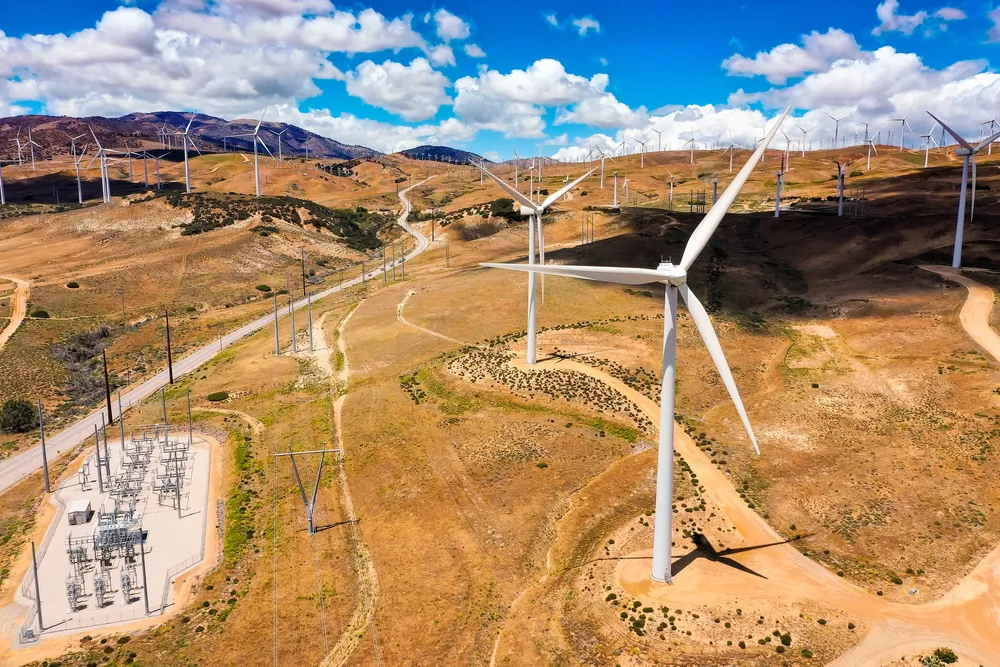Why isn't California more serious about onshore wind power?
The US’ largest solar generator needs more wind for grid balancing but new build proposals are foundering on local opposition and bottlenecks

A 205MW wind project in development in Northern California was seen as kickstarting a revival of the state’s onshore wind ambitions.
Located just west of Pattern Energy’s successful 101MW Hatcher Ridge wind farm in Shasta County, Repsol’s Fountain Wind’s environmental impacts were considered reasonable, transmission adequate, and with manifest benefits to the grid and local economy.
“If there's any project in California that would ultimately be permitted, it would be this one,” said Michael Rucker, CEO of developer Scout Clean Energy.
Scout is not involved with Fountain Wind but is active in California renewables, including its 148MW Gonzaga Ridge repowering project in Pacheco State Park in Merced County.
Instead, Fountain Wind has been rejected twice, first in 2021 by the local county government, which followed up with a law banning wind development.
More ominously, it was then rejected by the California Energy Commission (CEC) staff despite being submitted under a 2023 law aimed at overcoming local opposition.
AB 205 gives the CEC the authority to greenlight renewable energy projects over local objection, as it has long had for fossil and nuclear power plants.
CEC’s Final Staff Assessment (FSA) found Fountain Wind risks “multiple significant and unavoidable impacts on the environment.”
The project “is not necessary for public convenience and necessity and that a battery energy storage system would be a more prudent and feasible alternative,” CEC’s staff said, adding: “the project benefits do not outweigh its unavoidable environmental impacts.”
Staff recommendations are not binding but are usually accepted by the CEC’s board of five commissioners, who will have the final say.
Fountain Wind “was carefully designed and sited adjacent to an existing wind facility that has operated safely and reliably for more than a decade, [and] represents a critical step in meeting the State of California's and Repsol's ambitious clean energy commitments,” the representative said.
“With staff recommending denial of a very good project – it’s hard to find a project with fewer impacts – we're in a very dicey time,” said Nancy Rader, executive director of lobby group California Wind Energy Association (CalWEA).
“If the Energy Commission votes that down, I don't see any wind development happening in the state for a very long time,” she predicted.
This could have consequences for not just the project itself but the entire wind segment and the state’s energy transition goals.
Solar ahead
With 40GW of utility and residential solar capacity, world-leading geothermal generation, and a burgeoning battery electric storage sector, California has long been a leader in clean energy.
Its wind industry, however, has languished despite an early start going back to the 1980s. Almost no greenfield projects have come online since the completion of Terra-Gen’s 1.5GW Alta Wind Energy Centre in 2014, and the sector has plateaued at little more than 6GW in total.
Solar has long outpaced wind in the sunny Golden State due to resource availability and costs, and its desert hinterlands are awash in solar panels.
Wind development, however, is largely concentrated in a few areas with good resources, including Tehachapi in Kern County, San Gorgonio Pass in Riverside County, and Altamont in Alameda County.
These regions have been largely tapped out, and wind development in recent years has consisted almost entirely of repowering of existing arrays.
Repowering alone won’t get the state to its medium- and long-term energy goals, however, which could have major impacts on the state's mandatory push to 100% clean power by 2045, industry insiders warn.
“The models that the state relies on are increasingly calling on wind” due to a generation profile “that complements our tremendous solar resource,” said Alex Jackson, head of industry group American Clean Power Association's California unit (ACP-CA).
Critical need
In its recommendations to the California Independent Systems Operator (Caiso) for transmission planning, the public utilities commission (CPUC) is recommending 7.9GW of new onshore wind by 2035, reaching 9GW by 2045 to meet the goals.
This is a fraction of the more than 60GW of new solar and 37GW of storage CPUC’s plan calls for but will play a critical role in load balancing.
Wind generation typically picks up in the evening when California's massive solar farms go dark, helping the state wean itself off gas-fired power that usually meets the end-of-day peak load.
CPUC also calls for over 15GW of wind power imported from out of state, as well as 4.5GW of floating wind, while the state assembly has set further goals of 2-5GW of floating wind by 2030 and 25GW by 2045.
None of this will be easy for the state, though. Importing wind power will require massive new transmission infrastructure across multiple balancing authorities, an extremely difficult task in the US.
“Without wind, you need another 27GW of solar and batteries, and that's just going to become a lot harder to site,” said Rader.
That “is a huge deal, because it is so difficult to get stuff built in California,” she added.